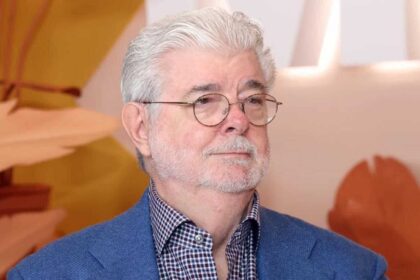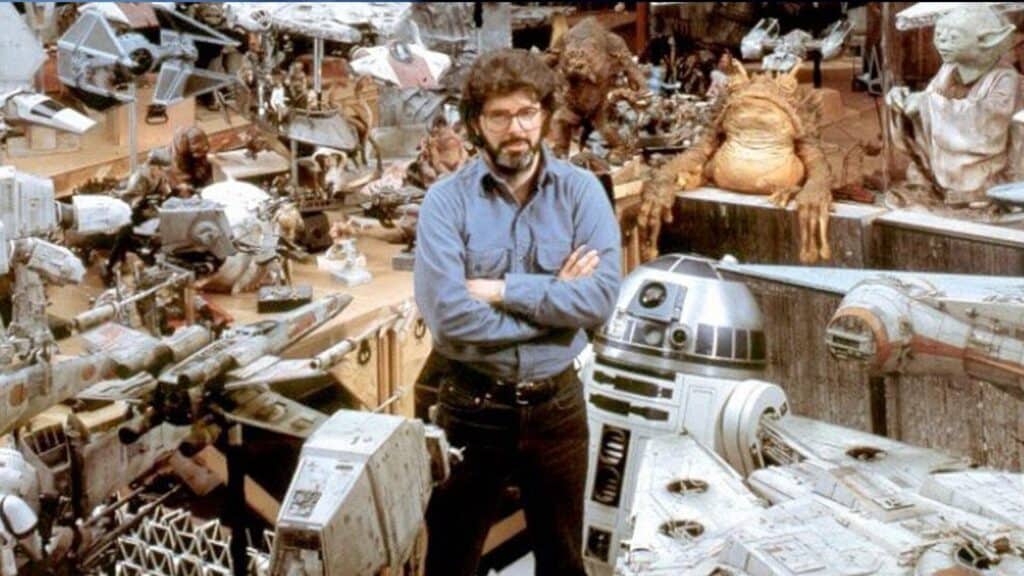George Lucas: The Entrepreneurial Force Behind Star Wars

When one thinks of George Lucas, the first thing that usually comes to mind is the epic galaxy far, far away he created in the form of Star Wars. However, behind the iconic lightsabers and intergalactic battles lies the story of a visionary entrepreneur who not only changed the face of the film industry but also built a multimedia empire that continues to thrive today.
In this article, we’ll explore George Lucas’s journey as an entrepreneur and how he transformed his passion for storytelling into a cultural and financial phenomenon.
The Birth of a Creative Vision
George Lucas was born on May 14, 1944, in Modesto, California. From an early age, he exhibited a deep interest in storytelling and filmmaking. He attended the University of Southern California’s School of Cinematic Arts, where he honed his skills and began crafting his unique narrative style.
It was during his time at USC that Lucas started to develop the foundation for what would become one of the most influential franchises in the history of cinema.
THX 1138 and American Graffiti
Before venturing into the galaxy of Star Wars, George Lucas gained recognition for his innovative ideas and storytelling abilities. In 1971, he directed his first feature film, “THX 1138,” a dystopian science fiction film that explored themes of government control and societal conformity.
Although the film didn’t achieve blockbuster success, it showcased Lucas’s talent and desire to push creative boundaries. Lucas’s breakthrough came with “American Graffiti” in 1973, a nostalgic coming-of-age film set in the 1960s.
The film was a massive hit, earning critical acclaim and box office success. This success provided Lucas with the financial stability and credibility he needed to pursue his ambitious dream – Star Wars.

The Birth of Star Wars
The creation of Star Wars was a pivotal moment in George Lucas’s entrepreneurial journey. Fueled by his passion for science fiction and a desire to bring a new kind of storytelling to the big screen, Lucas embarked on a journey to create the epic space opera that would change cinema forever.
Lucas faced numerous challenges during the production of Star Wars, including budget overruns, technical limitations, and skeptical studio executives. However, his unwavering belief in his vision led him to press on, eventually releasing “Star Wars: Episode IV – A New Hope” in 1977. The film was an instant sensation, captivating audiences with its groundbreaking special effects, memorable characters, and timeless storytelling.
Building the Empire
After the success of the first Star Wars film, George Lucas realized the potential of his creation and decided to retain the merchandising and sequel rights—an unconventional move at the time.
This decision laid the foundation for his entrepreneurial empire. The release of “The Empire Strikes Back” (1980) and “Return of the Jedi” (1983) solidified Star Wars as a cultural phenomenon and further expanded Lucas’s financial empire.
Lucas also established Lucasfilm Ltd. and the special effects company Industrial Light & Magic (ILM), both of which played crucial roles in the development and success of the Star Wars franchise. His foresight in creating a self-sustaining ecosystem around his creations allowed him to maintain creative control and reap the financial rewards.
Industrial Light & Magic (ILM)
Industrial Light & Magic (ILM) is a renowned visual effects (VFX) company that has played a pivotal role in shaping the world of filmmaking through its groundbreaking work in special effects and computer-generated imagery (CGI).
Over the years, ILM has become an industry leader in VFX and has contributed to numerous iconic films, including the Star Wars series, Indiana Jones, Jurassic Park, and many others.
Here is a closer look at ILM’s history and its connection to Photoshop and Pixar:
1. Early Years and Pioneering Work: ILM’s early years were marked by innovation and groundbreaking achievements in practical and optical effects. They introduced new techniques that revolutionized the industry, such as the use of motion control cameras and the development of the Dykstraflex camera system for more accurate and repeatable shots. Their work on the original Star Wars film earned them the first Academy Award for Best Visual Effects in 1978.
2. Advancements in CGI: While ILM initially focused on practical effects, they soon embraced computer-generated imagery (CGI). In the late 1980s, ILM’s work on films like “The Abyss” and “Terminator 2: Judgment Day” showcased the potential of CGI in film. This shift marked a turning point in the industry’s approach to visual effects.
3. Photoshop Connection: Adobe Photoshop, the industry-standard image editing software, was developed by Thomas and John Knoll. Thomas Knoll was a computer scientist with a background in computer graphics and image processing. He initially developed Photoshop in 1987 as a personal project to manipulate digital images. However, when he shared it with his brother John Knoll, who was working at ILM at the time, the software’s potential for digital film compositing became apparent.
4. ILM’s Role in CGI Advancements: ILM continued to push the boundaries of CGI in filmmaking. They played a significant role in the development of computer-generated characters and environments, as seen in movies like “Jurassic Park” (1993) and “Star Wars: Episode I – The Phantom Menace” (1999).
5. Pixar Connection: While not a direct subsidiary of ILM, Pixar Animation Studios has close ties to George Lucas and Lucasfilm. Pixar was originally part of Lucasfilm’s Computer Division, and it was spun off as its own company with funding from Steve Jobs in 1986. Pixar’s early successes, including “Toy Story” (1995), showcased the potential of computer animation in feature films.
6. Collaboration and Legacy: ILM and Pixar have collaborated on various projects, including the use of CGI in the Star Wars prequels. Both companies have left a lasting legacy in the world of filmmaking, pushing the boundaries of what is possible in visual effects and animation.
Today, ILM continues to be a leading force in the world of VFX, working on a wide range of films and television projects. They have embraced the latest technologies, such as virtual production techniques, to create immersive and realistic visual effects.
Their contributions to the entertainment industry, along with the legacy of Photoshop and Pixar, have forever changed the way films are made and continue to inspire new generations of filmmakers and artists.

Legacy and Impact
George Lucas’s entrepreneurial journey didn’t stop with the original Star Wars trilogy. He continued to expand the Star Wars universe through novels, comics, video games, and eventually the prequel trilogy, further solidifying its place in popular culture.
In 2012, Lucas sold Lucasfilm to The Walt Disney Company for approximately $4 billion. This deal included the rights to Star Wars and Indiana Jones, cementing George Lucas’s status as one of the most successful entrepreneurs in the entertainment industry.
Conclusion
George Lucas’s entrepreneurial journey is a testament to the power of creativity, vision, and persistence. He transformed a small idea into a cultural phenomenon that inspires and entertains generations.
Through Star Wars, Lucas changed how stories are told and demonstrated the importance of retaining creative control and building a multimedia empire around a beloved franchise.
George Lucas will forever be remembered as a filmmaker and a visionary entrepreneur who left an indelible mark on the world of entertainment.
 English
English  Italiano
Italiano 
